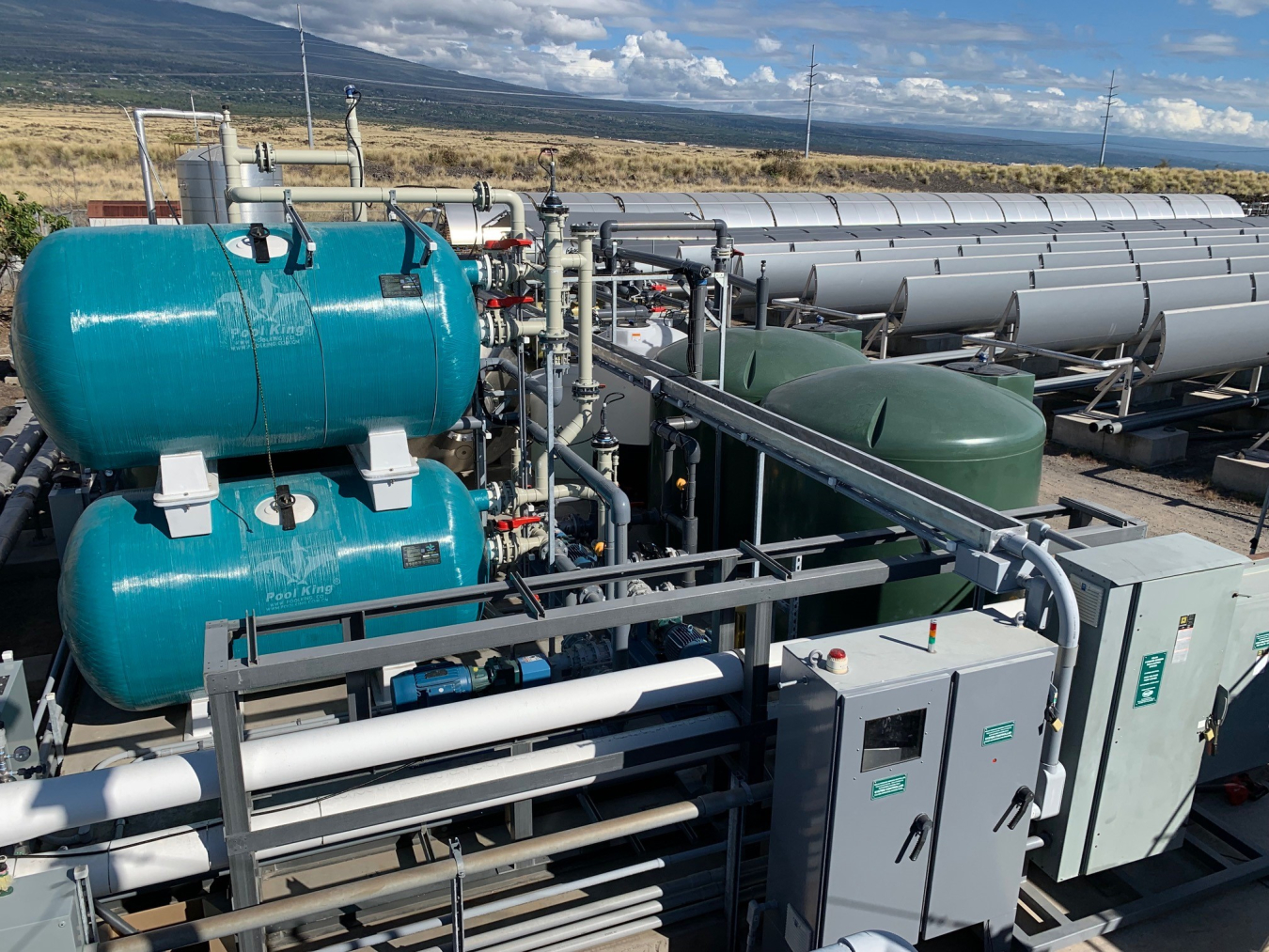
Forward osmosis plant in Kona, Hawaii, with concentrating solar-thermal power and storage for 24-7 solar desalination. Photo source: John Webley
As climate change diminishes our freshwater resources, problem solvers are looking to unconventional waters as backup. Indeed, for many years desalination technologies have been removing salt from seawater to make it drinkable, but the process is expensive, energy-intensive, and disruptive to ecosystems. Now U.S. Department of Energy (DOE) funding has enabled one company to demonstrate a more effective solution that is better for the environment.
Trevi Systems Inc. developed a desalination system that runs on heat generated by solar energy. It is also designed to incorporate energy storage to enable around-the-clock operation. Trevi’s innovation does not require electricity or fossil fuels for its desalination process, and it can produce fresh water at a higher recovery rate than conventional plants allow, which means significantly less salty brine is returned to the ocean.
With a $2 million award from the DOE Solar Energy Technologies Office (SETO) in 2018, Trevi and the Natural Energy Laboratory of Hawaii Authority (NELHA) integrated this technology in Hawaii to create a solar desalination plant that produces fresh water from ocean water at low cost. The team utilized an existing concentrating solar-thermal power array made up of a field of parabolic troughs—curved mirrors that reflect solar energy onto a receiver that converts it to heat. The team also utilized NELHA’s existing seawater intakes to provide water for the system.
Standard desalination methods use a semipermeable membrane to filter out salt and other contaminants from water through a process called reverse osmosis (RO), which requires energy to generate very high pressures to move the water through the membrane. Trevi’s innovation uses forward osmosis (FO), which does not require energy to move the water through the membrane and helps the membranes stay cleaner and last longer.
Instead of using high pressures, FO uses a “draw solution,” comprised of water with an additive, or solute, dissolved in it, which spontaneously pulls water across the membrane. Water flows through the membrane because of the difference in solute concentration in the seawater and the draw solution. Depending on the additive used, the draw solution can be regenerated, and fresh water produced, by heating with solar-thermal energy, to complete the desalination process.
With SETO funding, Trevi developed a solute, produced new membranes, made plastic heat exchangers—which remove heat from the product water after the draw solution is heated to remove the solute—and added a filter to ensure the water is drinkable. Using these components, Trevi developed a fully integrated system to demonstrate its FO technology at a commercially relevant scale, validate capital and operating costs, and test performance. The successful operation of the FO system produced water of similar quality to conventional RO, using only solar-thermal energy to drive the desalination, rather than electricity.
Beyond seawater, solar desalination technologies are well-suited to process very high-salinity brines produced from oil and gas extraction, and other industrial applications, like mining and agriculture.
Currently, solar-thermal energy is mainly used for power production in CSP plants. But the technologies developed at large-scale desalination plants like this could enable the solar industry to provide carbon-free heat for a wide variety of industrial processes, including cement or chemicals production, or agricultural processing.
Next, Trevi will secure partners that can provide the solar-thermal collectors and thermal-energy storage, commercialize the innovation, and bring it to cities and towns that need clean water.
